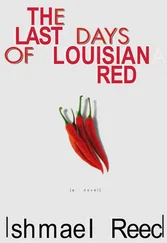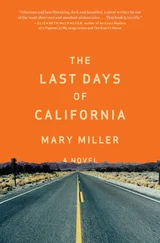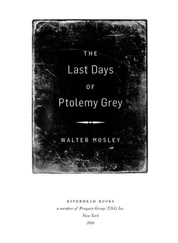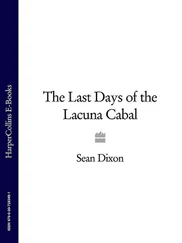Chalmers Johnson - Nemesis - The Last Days of the American Republic
Здесь есть возможность читать онлайн «Chalmers Johnson - Nemesis - The Last Days of the American Republic» весь текст электронной книги совершенно бесплатно (целиком полную версию без сокращений). В некоторых случаях можно слушать аудио, скачать через торрент в формате fb2 и присутствует краткое содержание. Год выпуска: 2006, ISBN: 2006, Издательство: Metropolitan Books, Жанр: Старинная литература, на английском языке. Описание произведения, (предисловие) а так же отзывы посетителей доступны на портале библиотеки ЛибКат.
- Название:Nemesis: The Last Days of the American Republic
- Автор:
- Издательство:Metropolitan Books
- Жанр:
- Год:2006
- ISBN:0805087281
- Рейтинг книги:5 / 5. Голосов: 1
-
Избранное:Добавить в избранное
- Отзывы:
-
Ваша оценка:
- 100
- 1
- 2
- 3
- 4
- 5
Nemesis: The Last Days of the American Republic: краткое содержание, описание и аннотация
Предлагаем к чтению аннотацию, описание, краткое содержание или предисловие (зависит от того, что написал сам автор книги «Nemesis: The Last Days of the American Republic»). Если вы не нашли необходимую информацию о книге — напишите в комментариях, мы постараемся отыскать её.
Nemesis: The Last Days of the American Republic — читать онлайн бесплатно полную книгу (весь текст) целиком
Ниже представлен текст книги, разбитый по страницам. Система сохранения места последней прочитанной страницы, позволяет с удобством читать онлайн бесплатно книгу «Nemesis: The Last Days of the American Republic», без необходимости каждый раз заново искать на чём Вы остановились. Поставьте закладку, и сможете в любой момент перейти на страницу, на которой закончили чтение.
Интервал:
Закладка:
At a conference on art crimes held in London a year after the disaster, the British Museum’s John Curtis reported that at least half of the 40 most important stolen objects had not been retrieved and that, of some 15,000 items looted from the museum’s showcases and storerooms, about 8,000 had yet to be traced. Its entire collection of 5,800 cylinder seals and clay tablets, many containing cuneiform writing and other inscriptions some of which go back to the earliest discovery of writing itself, was stolen. 126Since then, as a result of an amnesty for looters, about 4,000 of the artifacts have been recovered in Iraq, and more than 1,000 have been confiscated in the United States. 127Curtis noted that random checks of Western soldiers leaving Iraq had led to the discovery of several in illegal possession of ancient objects. Customs agents in the United States found more. Officials in Jordan have impounded about 2,000 pieces smuggled from Iraq; in France, 500 pieces; in Italy, 300; in Syria, 300; and in Switzerland, 250. Smaller numbers have been seized in Kuwait, Saudi Arabia, Iran, and Turkey. None of these objects has as yet been sent back to Baghdad.
The 616 pieces that form the famous collection of “Nimrud gold,” excavated by the Iraqis in the late 1980s from the tombs of the Assyrian queens at Nimrud, a few miles southeast of Mosul, were saved, but only because the museum had secretly moved them to the subterranean vaults of the Central Bank of Iraq at the time of the first Gulf War. By the time the Americans got around to protecting the bank in 2003, its building was a burned-out shell filled with twisted metal beams from the collapse of the roof and all nine floors under it. Nonetheless, the underground compartments and their contents survived undamaged. On July 3, 2003, a small portion of the Nimrud holdings were put on display for a few hours, allowing a handful of Iraqi officials to see them for the first time since 1990. 128
The torching of books and manuscripts in the Library of Korans and the National Library was a historical disaster of the first order. Most of the Ottoman imperial documents and the old royal archives concerning the creation of Iraq were reduced to ashes. According to Humberto Márquez, the Venezuelan author of Historia Universal de la Destrucción de los Libros, about a million books and ten million documents were destroyed by the fires of April 14, 2003. 129Robert Fisk, correspondent of the Independent of London, was in Baghdad the day of the fires. He rushed to the offices of the U.S. Marines’ Civil Affairs Bureau and gave the officer on duty a precise map locating the two archives and their names in Arabic and English. The smoke, he pointed out, could be seen from three miles away. The officer shouted to a colleague, “This guy says some biblical library is on fire,” but the Americans did nothing to try to put out the flames. 130
Given the black market value of ancient art objects, U.S. military leaders had been warned before the invasion that the looting of all thirteen national museums throughout the country would be a particularly grave danger in the days after they captured Baghdad and took control of Iraq. In the chaos that followed the Gulf War of 1991, vandals had stolen about 4,000 objects from nine different regional museums. In monetary terms, the illegal trade in antiquities is the third most lucrative form of international trade globally, exceeded only by drug smuggling and arms sales. 131Given the richness of Iraq’s past, there are also over 10,000 significant archaeological sites scattered across the country, only some 1,500 of which have been studied. Following the Gulf War, a number of them were illegally excavated and their artifacts sold to unscrupulous international collectors in Western countries and Japan. All this was known to American commanders.
In January 2003, an American delegation of scholars, museum directors, art collectors, and antiquities dealers met with officials at the Pentagon to discuss the forthcoming invasion. They specifically warned that Baghdad’s National Museum was the single most important site in the country. McGuire Gibson of the University of Chicago’s Oriental Institute said, “I thought I was given assurances that sites and museums would be protected.” 132Gibson went back to the Pentagon twice to discuss the dangers, and he and his colleagues sent several e-mail reminders to military officers in the weeks before the war began. However, a more ominous indicator of things to come was reported in the Guardian on April 14, 2003: rich American collectors with connections to the White House were busy “persuading the Pentagon to relax legislation that protects Iraq’s heritage by prevention of sales abroad.” On January 24, 2003, some sixty New York-based collectors and dealers organized themselves into a new group called the “American Council for Cultural Policy” and met with Bush administration and Pentagon officials to argue that a post-Saddam Iraq should have relaxed antiquities laws. 133Opening up private trade in Iraqi artifacts, they suggested, would offer such items better security than they could receive in Iraq.
The main international legal safeguard for historically and humanistically important institutions and sites is The Hague Convention for the Protection of Cultural Property in the Event of Armed Conflict, signed on May 14, 1954. The United States is not a party to that convention, primarily because, during the Cold War, it feared that the treaty might restrict its freedom to engage in nuclear war, but during the 1991 Gulf War the elder Bush’s administration accepted the convention’s rules and abided by a “no-fire target list” of places where valuable cultural items were known to exist. 134UNESCO (United Nations Educational, Scientific and Cultural Organization) and other guardians of cultural artifacts expected the younger Bush’s administration to follow the same procedures in the 2003 war.
Moreover, on March 26, 2003, the Pentagon’s Office of Reconstruction and Humanitarian Assistance (ORHA) headed by Lieutenant General (ret.) Jay Garner, the civil authority the United States had set up for the moment hostilities ceased, sent to all senior U.S. commanders a list of sixteen institutions that “merit securing as soon as possible to prevent further damage, destruction, and/or pilferage of records and assets.” The five-page memo dispatched two weeks before the fall of Baghdad also said, “Coalition forces must secure these facilities in order to prevent looting and the resulting irreparable loss of cultural treasures” and that “looters should be arrested/detained.” First on General Garner’s list of places to protect was the Central Bank of Iraq, which is now a ruin; second was the National Museum of Iraq; sixteenth was the Oil Ministry, one of only two places that U.S. forces occupying Baghdad actually defended (the other was the Interior Ministry). Martin Sullivan, chair of the President’s Advisory Committee on Cultural Property for the previous eight years, and Gary Vikan, director of the Walters Art Museum in Baltimore and a member of the committee, both resigned to protest the failure of Centcom to obey orders. Sullivan said it was “inexcusable” that the museum should not have had the same priority as the Oil Ministry. 135
As we now know, the American forces made no effort to prevent the looting of the great cultural institutions of Iraq. Its soldiers, often stationed nearby, simply watched vandals enter and torch the buildings. Professor Said Arjomand, an editor of the journal Studies on Persianate Societies and a professor of sociology at the State University of New York at Stony Brook, wrote, “Our troops, who have been proudly guarding the Oil Ministry, where no window is broken, deliberately condoned these horrendous events.” 136American commanders claim that, to the contrary, they were too busy fighting and had too few troops to protect the museum and libraries. However, this seems to be an unlikely explanation. During the battle for Baghdad, the U.S. military was perfectly willing to dispatch some two thousand troops to secure northern Iraq’s oil fields, and their record on antiquities did not improve when the fighting subsided. At the six-thousand-year-old Sumerian city of Ur with its massive ziggurat, or stepped temple tower (built in the period 2112-2095 BC, and restored by Nebuchadnezzar II in the sixth century BC), the marines spray-painted their motto, Semper Fi (semper fidelis, “always faithful”), onto its walls. 137The military then made the monument “off limits” to everyone in order to disguise the desecration that had occurred there, including the looting by U.S. soldiers of clay bricks used in the construction of the ancient buildings.
Читать дальшеИнтервал:
Закладка:
Похожие книги на «Nemesis: The Last Days of the American Republic»
Представляем Вашему вниманию похожие книги на «Nemesis: The Last Days of the American Republic» списком для выбора. Мы отобрали схожую по названию и смыслу литературу в надежде предоставить читателям больше вариантов отыскать новые, интересные, ещё непрочитанные произведения.
Обсуждение, отзывы о книге «Nemesis: The Last Days of the American Republic» и просто собственные мнения читателей. Оставьте ваши комментарии, напишите, что Вы думаете о произведении, его смысле или главных героях. Укажите что конкретно понравилось, а что нет, и почему Вы так считаете.











